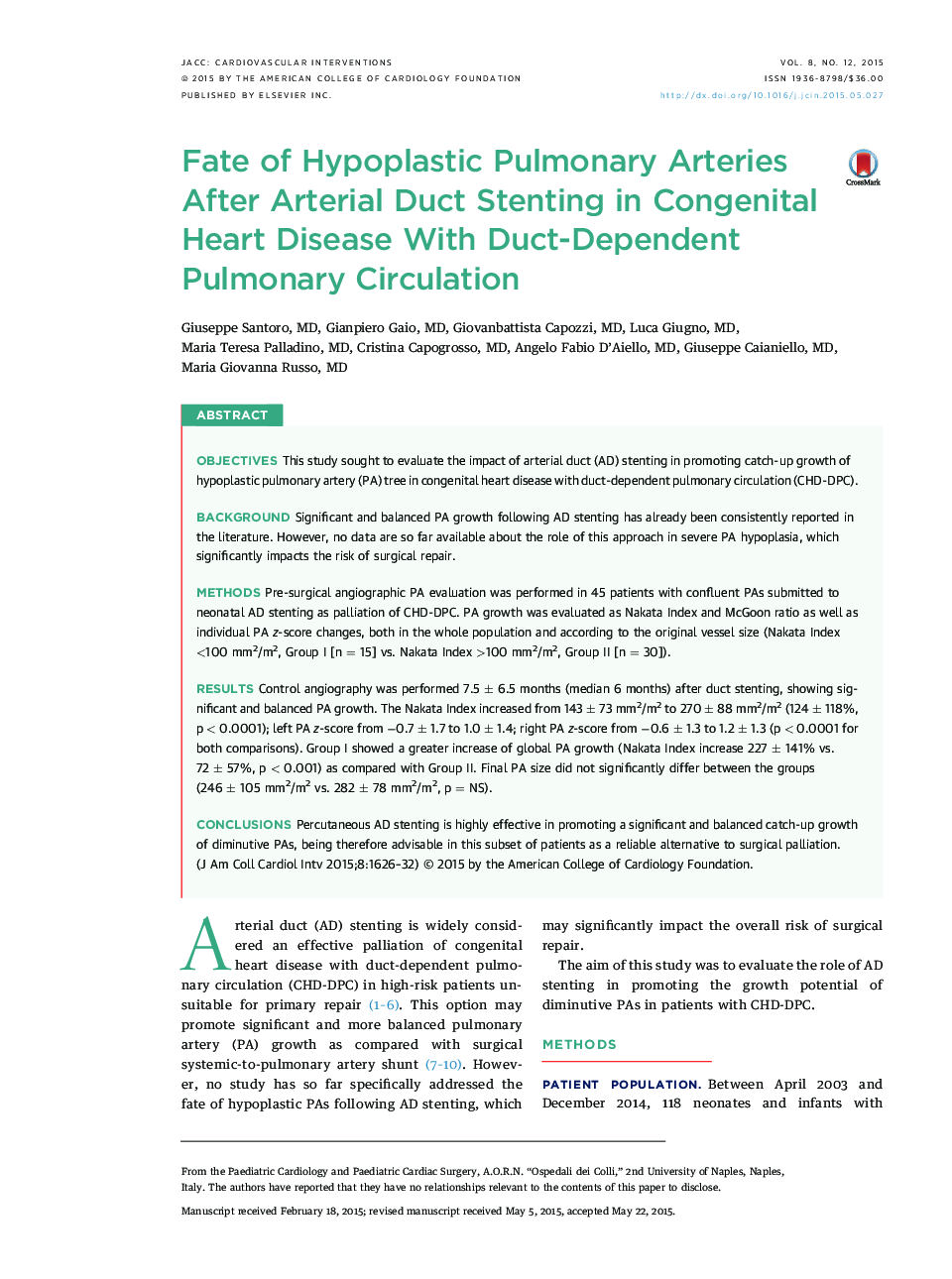| کد مقاله | کد نشریه | سال انتشار | مقاله انگلیسی | نسخه تمام متن |
|---|---|---|---|---|
| 2940223 | 1177025 | 2015 | 7 صفحه PDF | دانلود رایگان |
ObjectivesThis study sought to evaluate the impact of arterial duct (AD) stenting in promoting catch-up growth of hypoplastic pulmonary artery (PA) tree in congenital heart disease with duct-dependent pulmonary circulation (CHD-DPC).BackgroundSignificant and balanced PA growth following AD stenting has already been consistently reported in the literature. However, no data are so far available about the role of this approach in severe PA hypoplasia, which significantly impacts the risk of surgical repair.MethodsPre-surgical angiographic PA evaluation was performed in 45 patients with confluent PAs submitted to neonatal AD stenting as palliation of CHD-DPC. PA growth was evaluated as Nakata Index and McGoon ratio as well as individual PA z-score changes, both in the whole population and according to the original vessel size (Nakata Index <100 mm2/m2, Group I [n = 15] vs. Nakata Index >100 mm2/m2, Group II [n = 30]).ResultsControl angiography was performed 7.5 ± 6.5 months (median 6 months) after duct stenting, showing significant and balanced PA growth. The Nakata Index increased from 143 ± 73 mm2/m2 to 270 ± 88 mm2/m2 (124 ± 118%, p < 0.0001); left PA z-score from −0.7 ± 1.7 to 1.0 ± 1.4; right PA z-score from −0.6 ± 1.3 to 1.2 ± 1.3 (p < 0.0001 for both comparisons). Group I showed a greater increase of global PA growth (Nakata Index increase 227 ± 141% vs. 72 ± 57%, p < 0.001) as compared with Group II. Final PA size did not significantly differ between the groups (246 ± 105 mm2/m2 vs. 282 ± 78 mm2/m2, p = NS).ConclusionsPercutaneous AD stenting is highly effective in promoting a significant and balanced catch-up growth of diminutive PAs, being therefore advisable in this subset of patients as a reliable alternative to surgical palliation.
Journal: JACC: Cardiovascular Interventions - Volume 8, Issue 12, October 2015, Pages 1626–1632
